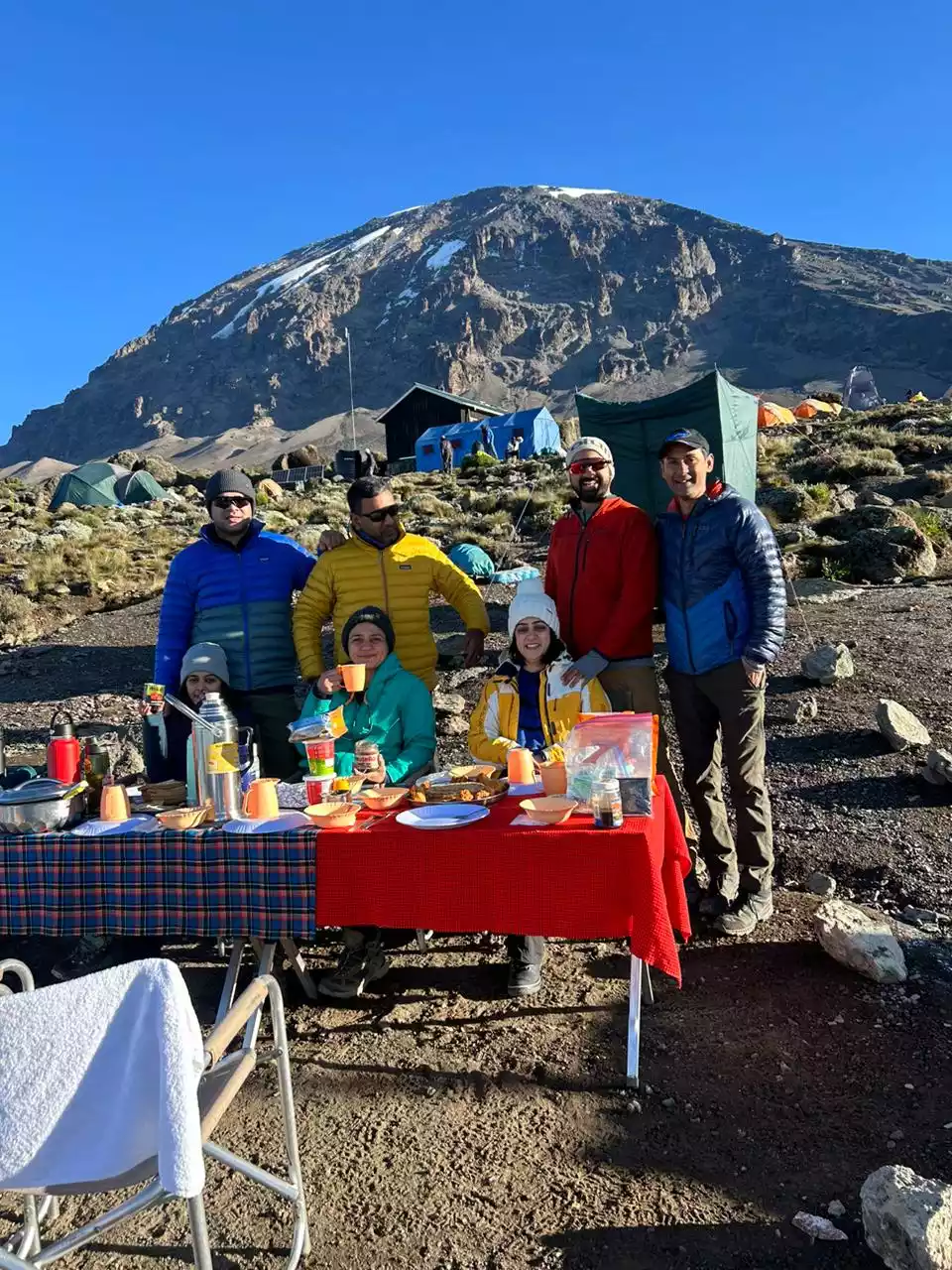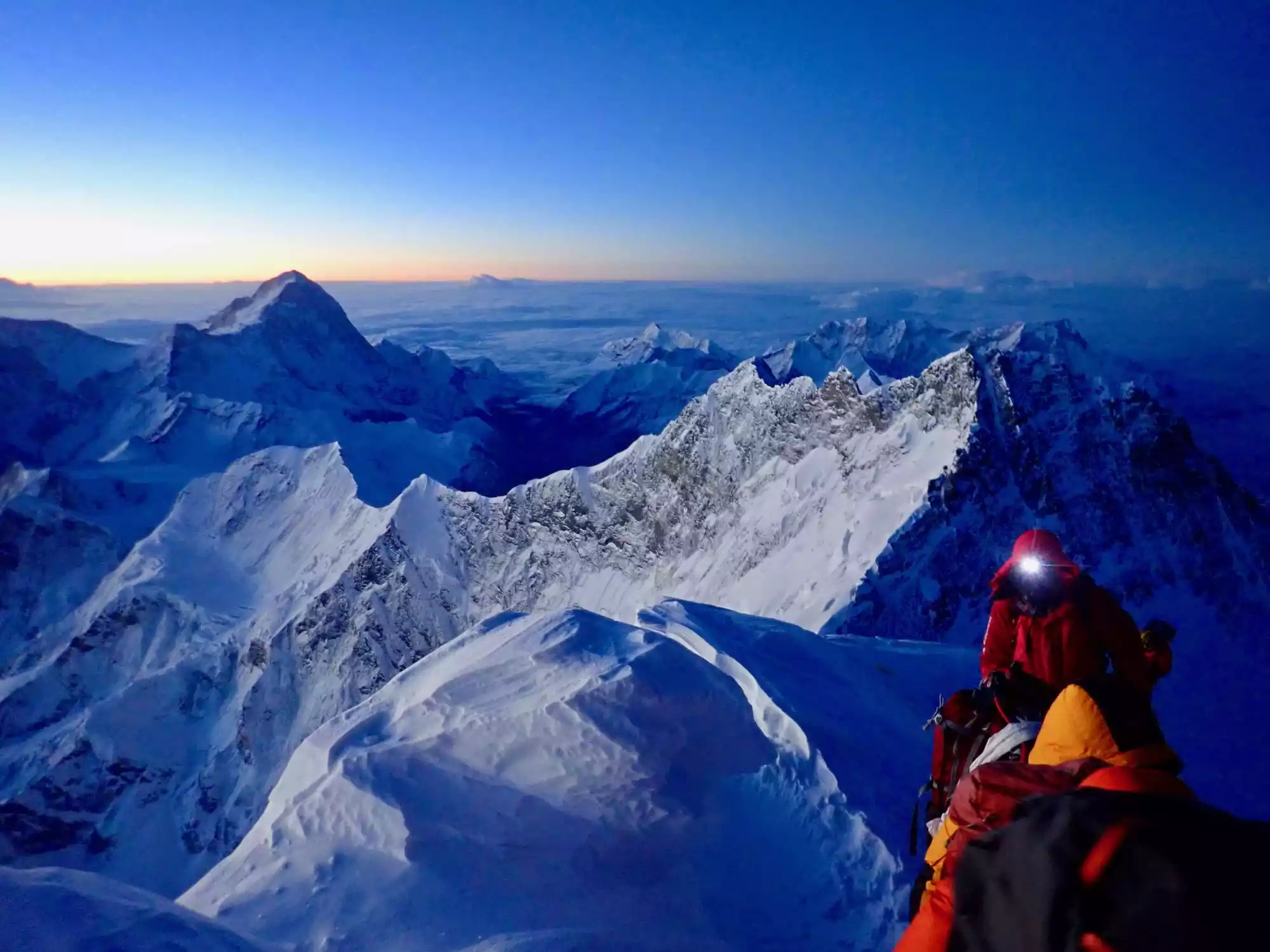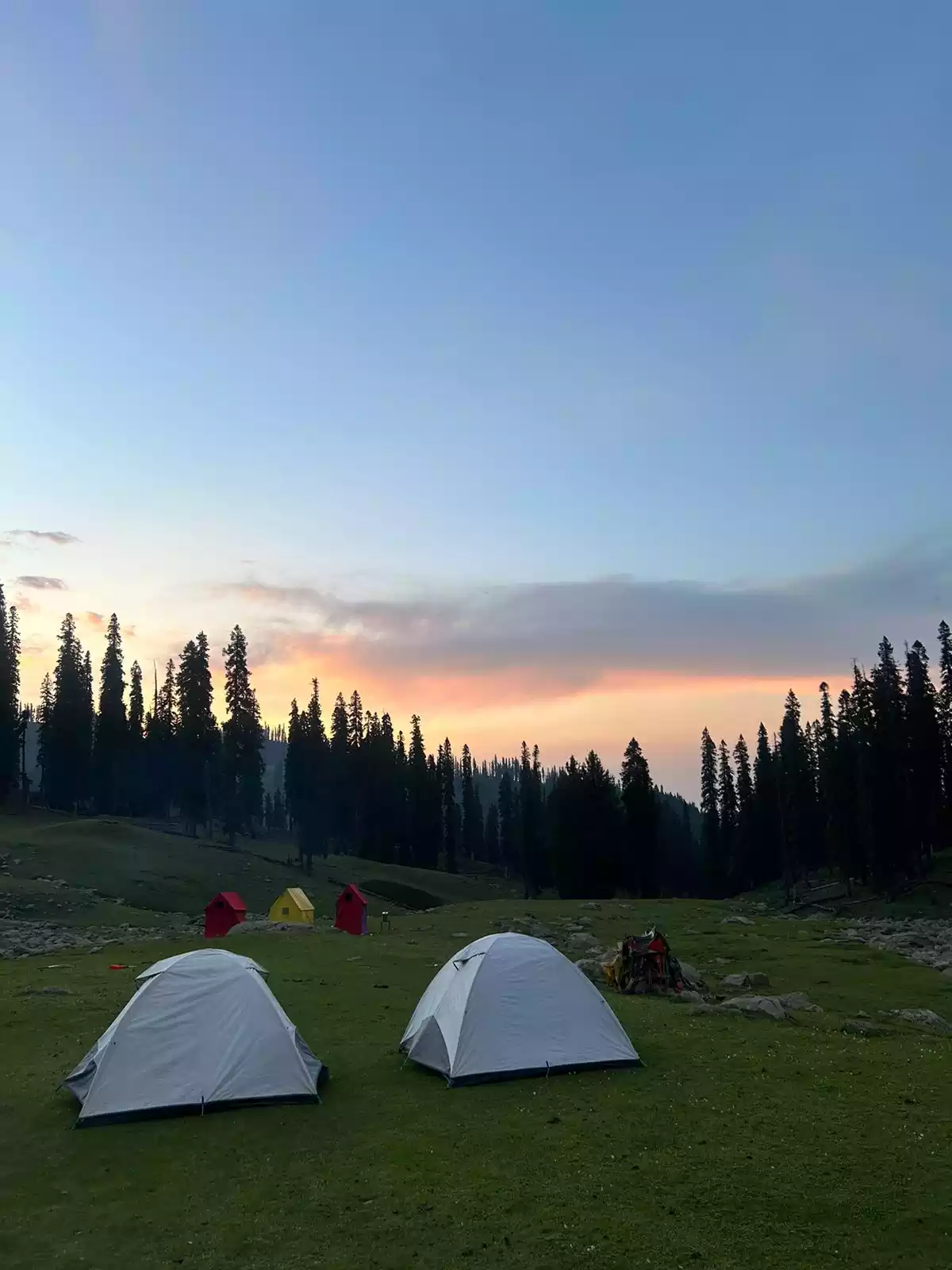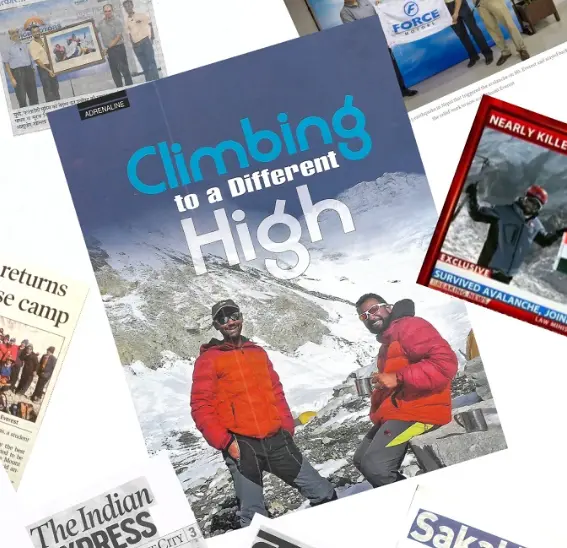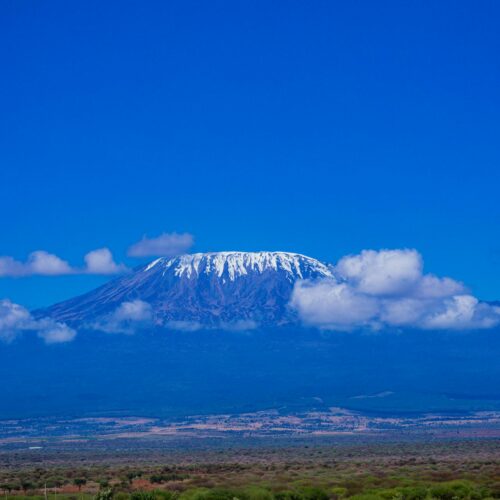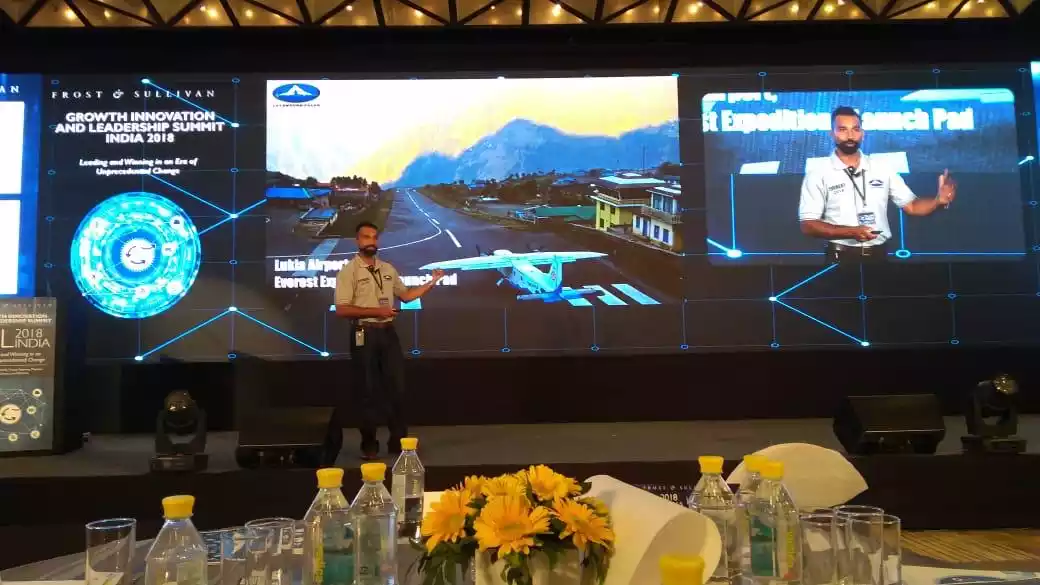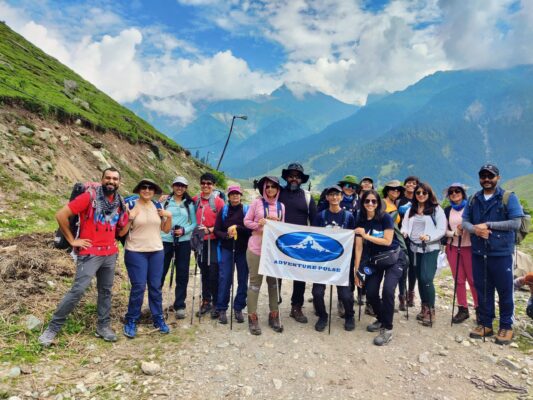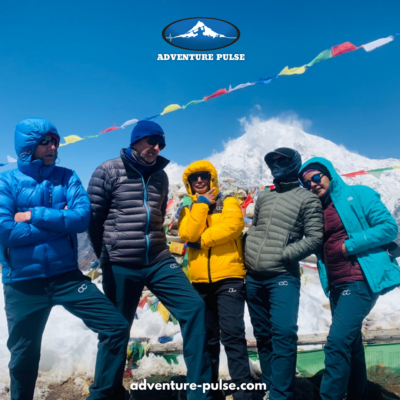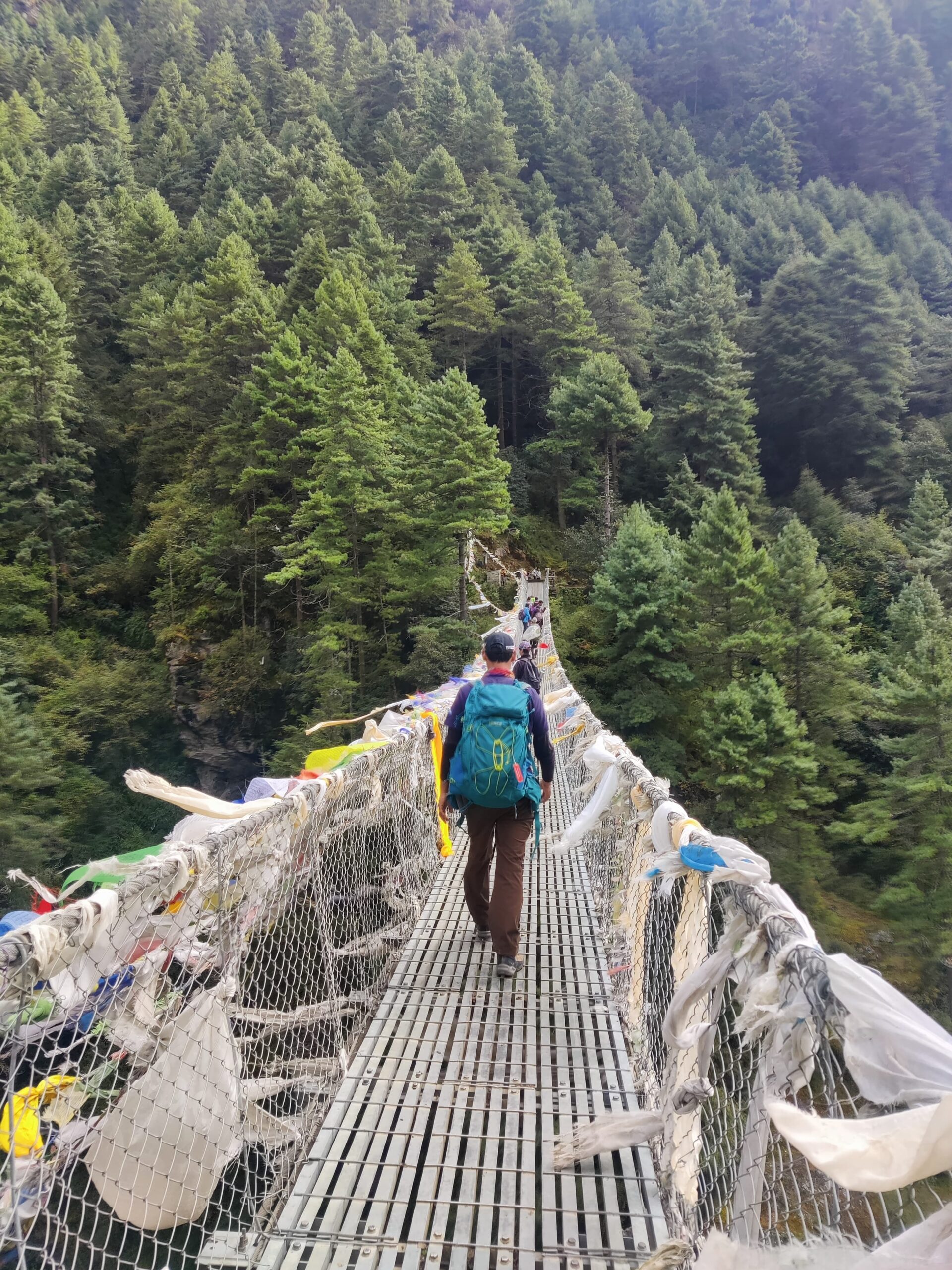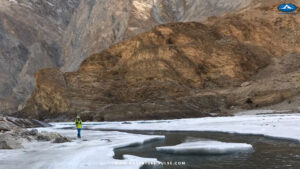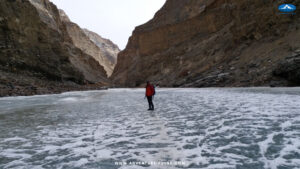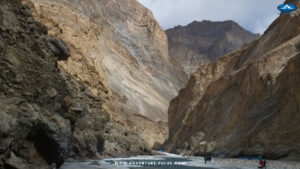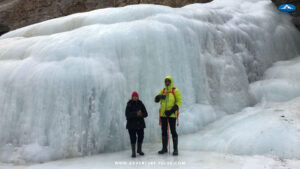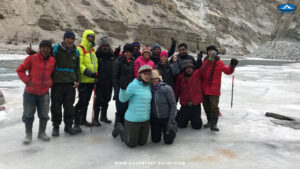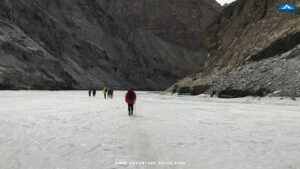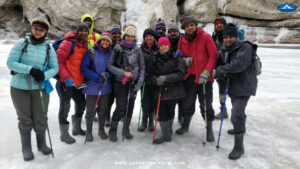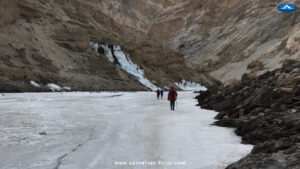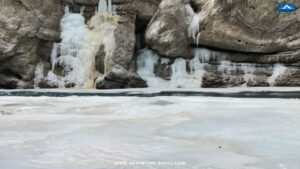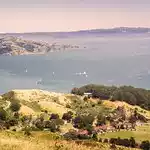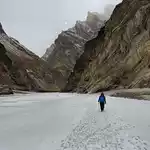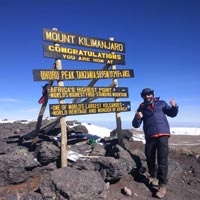Brief Itinerary
- Day 1 - Fly to Leh, Transfer to Hotel; Rest and Acclimatise.
- Day 2 - Rest and Acclimatization day in Leh. (Option of half day sightseeing to Shey, Thiksey and Hemis monastery)
- Day 3 - Acclimatization day in Leh. Medical checkup at Leh Hospital.
- Day 4 - Drive to Shingra Koma (3100m) and trek to Sumo.
- Day 5 - Trek from Sumo to Yokma Do.
- Day 6 - Yokma Do to Naerak camp (3390m)
- Day 7 - Naerak to Sumo/Bakula.
- Day 8 - Trek down from Sumo/Bakula to Road head, same evening drive to Leh. Overnight in Hotel.
- Day 9 - Fly out from Leh.
Inclusions & Exclusions
Trip Cost Includes:
- Accommodation: Our hotel stay is in a comfortable 4 star hotel in Leh with heated rooms on double sharing basis. The hotel would be the same standard as Hotel Lakrook or equivalent.
- Sight Seeing: Even if you have visited Leh before, our day sightseeing program exposes you to some of the Unique aspects of Ladakh found specifically in the Winter Season. Our day trip, introduces you to the unique sport of Ice Skating & Ice Hockey, played only in Ladakh out of our entire country. In addition, we plan a visit to the famous Ice Stupa’s conceptualized by Mr. Sonam Wangchuk.
- Meals: While in Leh the premium services cost include breakfast & dinner in Leh in the hotel. Since its winter most of the market is closed and it’s very cold to go out to the market in the mornings or evenings to get a meal. While on the trek we include all meals – Breakfast, Lunch, evening tea & Snacks and dinner. This is also supplemented with rounds of tea, coffee and hot chocolate. All the meals are served in the dinning tent with proper camping stools.
- Tents: The accommodation during the trek is in comfortable weatherproof tents on double sharing basis. (The average on the Chadar trek is 3 people in a tent), however we ensure only two people in a tent with good comfortable mattress with a good quality sleeping bag in the night. In addition, in the night, we provide each person with a Hot Water bag to further ensure their comfort while sleeping.
- Toilet Facilities: As part of our premium services, we offer you a proper toilet tent over a common pit loo. The Toilet is for use only by our camp members and no one else.
- Porterage and personal Bags: We expect you to carry only a day pack during the trek and your main bags are carried on the sledge by the porters. This service is already included in the trek.
- Guide’s & Staff – Our guide’s and staff are all local’s to promote the local economy. At any given point there will always be a lead guide and rear guide, so you can walk at your own comfortable pace. Apart from the Guide’s, there will also be a cook and two kitchen boys to help set up the campsite.
- Permits & Paper work : The Leh District administration has made come paperwork compulsory, We include all these in our costs :
- Trek & Wildlife permission – INR 2200 / -
- Insurance – 2000 /-
- Camping Fee – 800 / -
- Medical checkup – INR 100 / -
Trip Cost DOES NOT Include:
- Any kind of personal expenses.
- Personal Insurance.
- Any extra food, snacks or beverages ordered in Leh.
- Tips for the staff. (About 2 – 3 K).
- Extra Hotel Nights in case the Trek is cut short because of bad weather
- Anything not specifically mentioned under the head price Includes.
Things to carry
Download as PDFExtreme temperature variations, high altitude, snow glare & proximity to sun are certain factors which necessitate the need to for proper trekking equipment. In order to enjoy your experience in the mountains, we have recommended that you carry the following with you.
If you are unable to procure any of the above mentioned items, then suitable arrangements will be made so that the same can be either bought or rented in Leh based upon actuals.
Apparel
- Thermal Inners - At least 1 pair of Top and Leggings
- 6-8 t-shirts or long-sleeve shirt (cotton / dryfit)
- 2-3 pairs of trekking pants (no denim!)
- 1 Sweater/Sweatshirt
- 1 Fleece Jacket
- 1 Down Jacket
- 1 Waterproof Layer like raincoat or wind-cheater
- 1 pair of hiking boots
- 1 pair of comfortable sandals/floaters/sneakers
- 6-8 pairs of cotton socks (for day)
- 2 pairs of thick/woollen socks (for night)
- Gloves - liner and outer
- Sun hat
- Woollen cap
- Buff
Accessories
- Duffel bag / Rucksack (60L+)
- Daypack / Backpack (20-30L capacity)
- Sleeping bag (can be bought or rented in Kathmandu)
- 2x 1L Bottles (to carry drinking water)
- Lunchbox
- Torch + Batteries / Headlamp
- Knee/Ankle/Wrist Guards
- Trekking Poles
- Sunblock
- Sunglasses
- Moisturiser
- Hand Sanitiser
- Personal Medical Kit
- Personal Toiletries Kit
- Snacks!
Fitness
Download as PDF- There are three main aspects of training to focus on – strength training, cardiovascular training, and trekking + trekking alternatives.
- Strength training involves training different muscle groups, so that they can become stronger. There are different exercises for each muscle group, and working them all out 2x-3x a week should be enough to help you get comfortable trekking.
- Legs / lower body - exercises like squats, glute bridges, step ups and leg presses with help you develop stronger muscles in the lower body.
Core - Exercises like planks, bicycle crunches and leg raises can help with core stability; Pilates is also a core-intensive type of workout that will help.
Upper body - Bodyweight exercises like push-ups, pull-ups and dips will help develop these muscles. You can also use resistance bands or light weights to develop them further.
- It’s vital to do plenty of cardio training before your trek, so that you can get the most out of your experience
- Running - This is the most recommended form of cardio activity, as it activates a lot of the same muscles as trekking. Being able to run 10km in 60 minutes will allow you to get the most out of your trek.
Cycling / Swimming - If you have knee issues, or don’t enjoy running, you can also opt for cycling and swimming. Being able to cycling 30-50km or swim for 30-40 minutes, thrice a week, should be good to help you with treks like EBC.
HIIT training / Crossfit - Another option to level up your cardio training is to opt for high intensity aerobic exercises like HIIT or Crossfit, 2-3 times a week
The aim is to get your heart rate up, so you do not get winded on long days of trekking
- Hiking
Try to get outdoors and go for a hike on the weekends! Uphill trails of 4-8 kilometres are will help you get used to trekking. Make it a point to carry a loaded backpack, and walk in your trekking shoes.
- Hiking Alternatives
Climbing stairs, and using the treadmill or stairmaster on an incline, will help prepare you for treks. Make it a point to carry a loaded backpack so that you can get used to the extra weight; and use your trekking boots, so that you can break them in and walk comfortably.
- If you’re confused with all this information, no need to worry! The most important thing with training is consistency, and staying injury-free. Your training week should ideally have
Strength training - 3 sessions
Cardio training - 3 sessions
Hiking - 1 long session, best on the weekends
Rest and stretching - at least 1 day
FAQs
Chadar Frozen River Trek
What are the staying arrangements for this trek?
While in Leh, Adventure Pulse will put you up in a comfortable hotel / Guest house with a centrally heated dining area. You also have an option of upgrading your hotel to 4 star property like the – Zen Ladakh on actuals. Once we start the trek, the accommodation is in a camp set up. We would have good quality tents on double/triple sharing basis, with a separate dinning tent for meals and a separate toilet tent. Sleeping bags and mats are also provided by Adventure Pulse.
What kind of physical shape do I need to be in to trek to Everest Base Camp?
You need to be in good physical shape to undertake this trek. It’s the coldest trek in India and does demand good physical fitness. Though physically it’s not very challenging, it does involve 5 -6 hours of walking everyday over 5 days. Please refer to our Physical fitness document for more details on this topic.
What are the start and endpoints of this trek?
One needs to fly to Leh for the Chadar trek. There are regular flights from Delhi and Mumbai to Leh. On your arrival in Leh, You need to hire a prepaid taxi from the airport to reach your pre-booked hotel. After our 03 days of acclimatization at Leh, we would drive to the start point of the trek, which is a 01 hour drive from Leh. The trek will end at the same point.
Do I need any special equipment / climbing gear for this trek?
Apart from good quality warm clothing, we highly recommend using the local made Gum boots for this trek. The terrain is a little tricky and there may be patches where one may need to vade through a little bit of water if the Chadar is not strong and stable enough and the local made gum boots are best suited for this trek . You can also carry your regular trekking shoes as back up. Other than this, no other personal climbing equipment is required. For list of other things and warm clothing to carry, please refer to our list of things to carry for this trek.
What is the communication system available along the way?
Regular phone and data services work in Leh. But please note that only postpaid services work on roaming in Leh and Pre-paid services won’t work. Leh has good phone and data connectivity with 3G and 4G services also available on most network. While on the trek there is no network and one is disconnected from the world during the course of the trek.
What about high altitude acclimatisation?
Leh is located at an altitude of 3250 m and it’s important we spent the first 48 hours acclimatizing in Leh. We at Adventure Pulse consider acclimatization as one of the most important aspects of trekking and spend enough time to do that. Once you arrive in Leh, the first 03 days are spent acclimatizing. On day 02 morning, we go for a short 02 hour acclimatization hike up to a monastery. In the evening, we walk to the Leh market and walk back to our hotel, thus allowing the body to get used to the conditions around.
What are the food arrangements?
The hotel in Leh serves good breakfast which is included in the meal plan. During the day and evening, one can order à la carte service in the hotel or even go to the close by market to try some local cuisine. While on the trek, all meals are included and the meals are usually a good mix of Indian and continental food. Our cooks are very experienced and will be happy to entertain any particular requests you may have for your meals. All the meals are served in the common dinning tent.
Will I be able to take a shower or bath during the course of the trek?
Regular shower facilities will be available in the hotel in Leh. But while we are higher up on the mountain, Shower facility is not available during the trek and not advisable also due to the extreme temperatures.
What are the emergency medical precautions on this trek?
The Adventure Pulse staff and guides carry a fully equipped medical kit with necessary medicines and an Oxygen meter. As a standard practice, we check oxygen levels of all our clients twice a day and take necessary precautions if any irregularity is found in the oxygen reading. In case the problem persists, the client is sent down with a qualified guide. In case of an Injury where the trekker is not in a position to walk down, our staff and porters will help carry the person down to the road head where a vehicle and a doctor visit in Leh can be organized.
What happens in case of bad weather on the trek?
Adventure Pulse usually plans all it treks during the most favourable season, but having said that, weather is always an unpredictable factor. We usually look at weather reports before leaving for the trek. Buffer day/s are always built in the itinerary as contingency if we get hit by unfavourable weather conditions. In the worse situation, we may have to turn back midway, but safety is always a priority which cannot be compromised on.
Featured Blog Posts
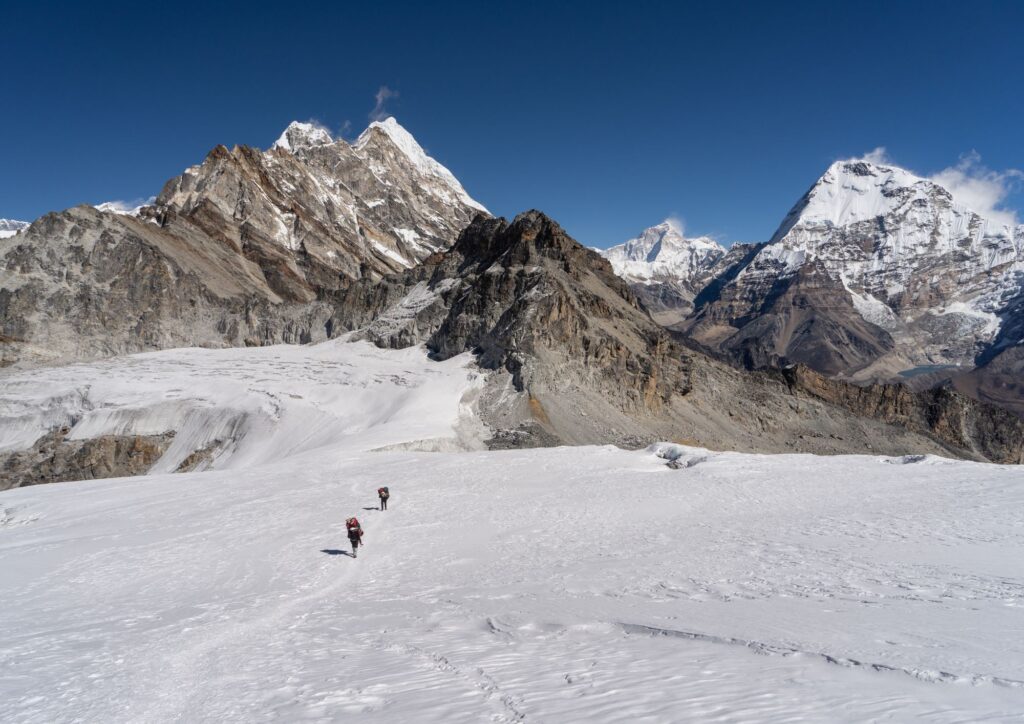 Best Climbing Peaks in India - Climbing in India The Indian Himalayas are home to stunning landscapes ranging from lush meadows to rugged cold deserts. India…
Best Climbing Peaks in India - Climbing in India The Indian Himalayas are home to stunning landscapes ranging from lush meadows to rugged cold deserts. India… 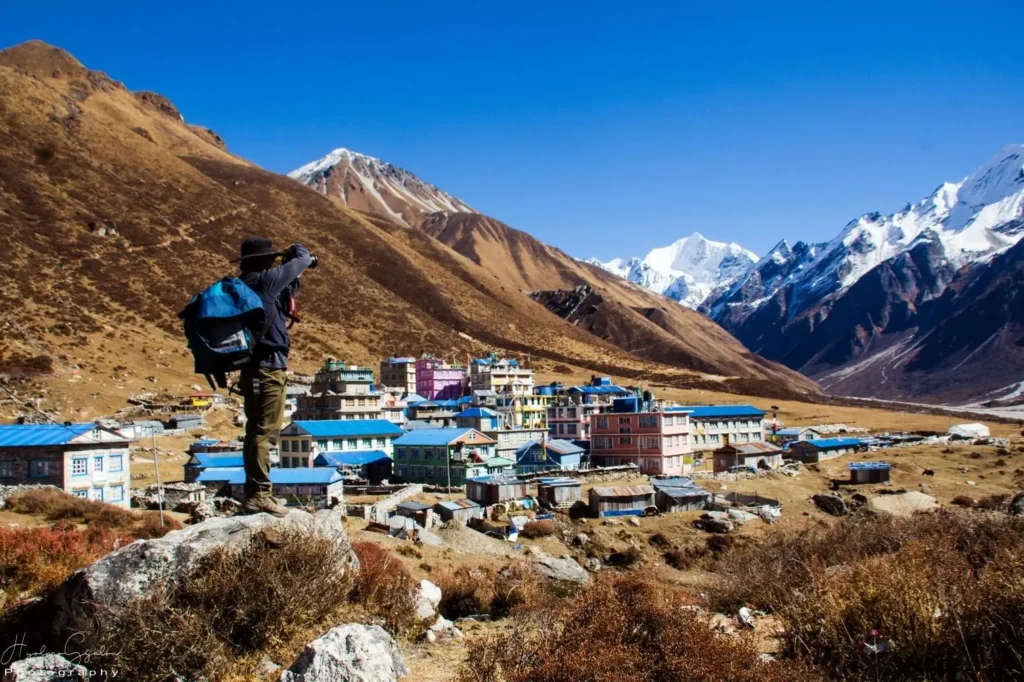 Conquering Mentok Kangri: A Climber’s Guide to Ladakh’s Crown Jewel - Mentok Kangri, or simply "Mentok," is a majestic peak towering over Ladakh, India. Standing at a formidable 6,310 meters (20,702…
Conquering Mentok Kangri: A Climber’s Guide to Ladakh’s Crown Jewel - Mentok Kangri, or simply "Mentok," is a majestic peak towering over Ladakh, India. Standing at a formidable 6,310 meters (20,702…  Experiencing the Climb of a Lifetime at Kang Yatse II - Overview Kangyatse 2 is an awe-inspiring mountain located in the Ladakh region of India. It stands at 6,200 meters…
Experiencing the Climb of a Lifetime at Kang Yatse II - Overview Kangyatse 2 is an awe-inspiring mountain located in the Ladakh region of India. It stands at 6,200 meters… 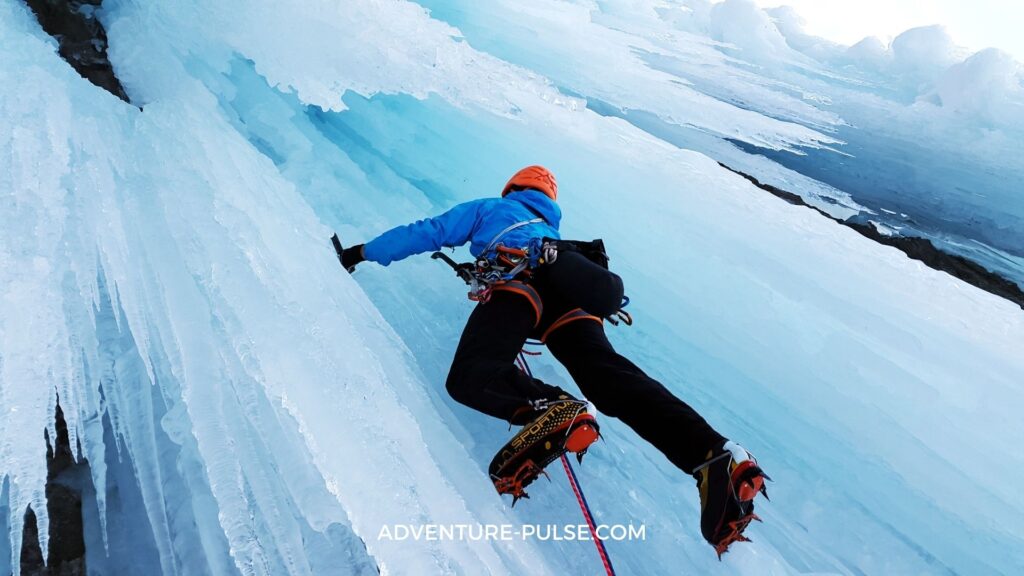 Winter Climbing Workshop – Ladakh 2022 - Adventure Pulse is extremely excited to Invite you for the exclusive "WINTER CLIMBING WORKSHOP". A one of its kind workshop conducted by…
Winter Climbing Workshop – Ladakh 2022 - Adventure Pulse is extremely excited to Invite you for the exclusive "WINTER CLIMBING WORKSHOP". A one of its kind workshop conducted by…

